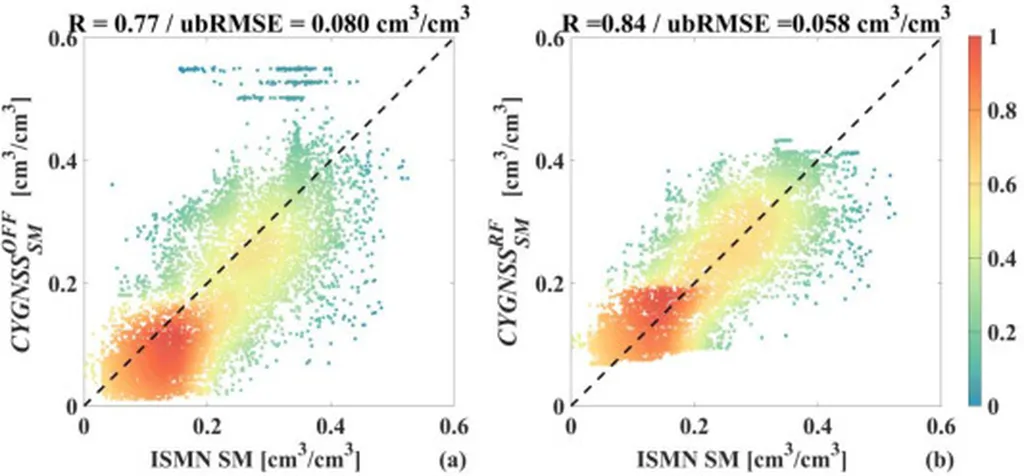In the heart of China’s Yellow River Delta, a region critical for ecological protection and agricultural sustainability, a groundbreaking study led by Dongmei Song of the College of Oceanography and Space Informatics at China University of Petroleum (East China) is revolutionizing soil moisture monitoring. Published in the IEEE Journal of Selected Topics in Applied Earth Observations and Remote Sensing, Song’s research introduces a novel method that leverages global navigation satellite system reflectometry (GNSS-R) to provide unprecedented insights into soil moisture levels.
The study addresses a longstanding challenge in remote sensing: the difficulty of accurately retrieving soil moisture data due to surface heterogeneity and complex feature associations. Song and her team developed a multimodal cross-branch fusion network (MCBF-Net), a deep learning-based approach that integrates multiple data modalities to enhance feature representation and retrieval performance. “Our method combines the strengths of different data types and advanced machine learning techniques to overcome the limitations of traditional soil moisture inversion methods,” Song explains.
MCBF-Net consists of three parallel branches, each designed to extract specific features from different data types. A 1-D convolutional neural network processes time-delay waveforms, a multiscale fusion transformer captures global features of delay-Doppler map (DDM) imagery, and a backpropagation neural network learns nonlinear patterns in auxiliary data. A multimodal feature fusion module and a fusion loss function further enhance cross-modal integration and branch synergy, resulting in a comprehensive and accurate representation of soil moisture.
The implications of this research for the energy sector are significant. Accurate soil moisture monitoring is crucial for optimizing agricultural practices, managing water resources, and mitigating the impacts of climate change. “By providing high-accuracy, regional-scale soil moisture data, our method supports sustainable agricultural and environmental management, which is essential for ensuring energy security and promoting sustainable development,” Song notes.
The study’s experimental results demonstrate the effectiveness of the proposed method. Using Soil Moisture ActivePassive (SMAP) satellite observations as reference data, the researchers achieved an RMSE of 0.0284 cm³/cm³ and a correlation coefficient R of 0.9232, indicating high accuracy and robustness. The spatiotemporal distribution of soil moisture was also analyzed, showcasing the model’s potential for large-scale applications.
As the world grapples with the challenges of climate change and resource depletion, innovative solutions like Song’s GNSS-R soil moisture inversion method offer a glimmer of hope. By harnessing the power of deep learning and remote sensing, this research paves the way for more sustainable and efficient management of our planet’s precious resources. “Our work not only advances the field of remote sensing but also contributes to the broader goals of environmental conservation and sustainable development,” Song concludes.
The IEEE Journal of Selected Topics in Applied Earth Observations and Remote Sensing, known in English as the IEEE Journal of Selected Topics in Applied Earth Observations and Remote Sensing, serves as a platform for cutting-edge research in the field, and Song’s study is a testament to the journal’s commitment to fostering innovation and progress. As the energy sector continues to evolve, the insights gained from this research will undoubtedly play a pivotal role in shaping future developments and driving the transition towards a more sustainable and resilient future.

